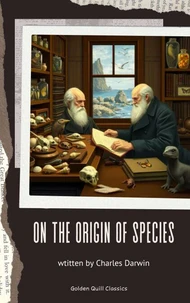In "The Movements and Habits of Climbing Plants, " Charles Darwin delves into the intricate mechanisms of plant movement, particularly focusing on climbing vines. With meticulous observation and a clear, scientific literary style, Darwin combines descriptive detail with methodical analysis to examine how these plants navigate their environment and adapt for survival. The work is notably contextualized within Darwin's broader theories of evolution and natural selection, showcasing early interdisciplinary approaches that bridge botany, biology, and biomechanics.
Through rigorous experimentation and insightful commentary, the reader gains an appreciation of the complex interactions between organisms and their habitats. Charles Darwin, renowned for his foundational contributions to evolutionary biology, draws inspiration from his profound interest in natural observations and the diversity of life forms. His extensive travels aboard the HMS Beagle and later studies in botany cultivated a unique perspective on organisms' survival strategies.
"The Movements and Habits of Climbing Plants" reflects his lifelong commitment to understanding the adaptive features of species, providing a fascinating glimpse into the developmental trajectories of plants that would later inform his seminal theories. I highly recommend this work to readers intrigued by the intersections of botany and evolution. Darwin's careful observations and passion for nature invite readers to reexamine the world around them, fostering a deeper understanding of how living organisms respond to their environments.
Whether you are a botanist, a naturalist, or simply a curious mind, this book is an essential addition to your intellectual library.
In "The Movements and Habits of Climbing Plants, " Charles Darwin delves into the intricate mechanisms of plant movement, particularly focusing on climbing vines. With meticulous observation and a clear, scientific literary style, Darwin combines descriptive detail with methodical analysis to examine how these plants navigate their environment and adapt for survival. The work is notably contextualized within Darwin's broader theories of evolution and natural selection, showcasing early interdisciplinary approaches that bridge botany, biology, and biomechanics.
Through rigorous experimentation and insightful commentary, the reader gains an appreciation of the complex interactions between organisms and their habitats. Charles Darwin, renowned for his foundational contributions to evolutionary biology, draws inspiration from his profound interest in natural observations and the diversity of life forms. His extensive travels aboard the HMS Beagle and later studies in botany cultivated a unique perspective on organisms' survival strategies.
"The Movements and Habits of Climbing Plants" reflects his lifelong commitment to understanding the adaptive features of species, providing a fascinating glimpse into the developmental trajectories of plants that would later inform his seminal theories. I highly recommend this work to readers intrigued by the intersections of botany and evolution. Darwin's careful observations and passion for nature invite readers to reexamine the world around them, fostering a deeper understanding of how living organisms respond to their environments.
Whether you are a botanist, a naturalist, or simply a curious mind, this book is an essential addition to your intellectual library.

 , qui est-ce ?
, qui est-ce ?